Many thanks to SWLing Post contributor, Jock Elliott, who shares the following guest post:
A bit more about NOAA Weather Radio
By Jock Elliott, KB2GOM
Okay, I’ll admit it: I’m a fan, an advocate, an evangelist for NOAA Weather Radio (NWR).
Why? Because, quite simply, if you live in the United States, it is one of the very best deals you are ever likely to get. NWR is the voice of the National Weather Service. It is the fastest and most reliable means of receiving alerts when hazardous weather approaches.
NWR includes more than 1000 transmitters, covering some or all of 50 states, adjacent coastal waters, Puerto Rico, the U.S. Virgin Islands, and the U.S. Pacific Territories. Broadcasts are found in the VHF public service band at these seven frequencies (MHz): 162.400, 162.425, 162.450, 162.475, 162.500, 162.525, and 162.550. Radios capable of receiving NWR signals may include consumer radios, ham radios, scanners, and dedicated weather radios.
For more information about coverage, check these:
NOAA Weather Radio is free. There are no commercials, you don’t have to wait for other programming to be completed to hear the weather forecast, and, because it is radio, you can listen and get a concise summary of what’s going on with the weather in your area while you are doing something else. Even better, the folks at the National Weather Service tell me that over 80 percent of the NWR transmitters have some form of backup or emergency power, many of which can continue to operate for 5-10 days while the main power is out. There is a wealth of information about NWR here: https://www.weather.gov/phi/nwrfaq scroll down to see details.
Why do you want a receiver that can hear NOAA Weather Radio? Short answer: because every state in the Union has some form of hazardous weather that could prove lethal. Early warning just might save your life.
In his excellent book Warnings – the true story of how science tamed the weather, Mike Smith points out how successful meteorology has been at saving lives. In the 1950s, with the beginning of the tornado warning system, the death rate from tornados was 1.5 deaths per million people. By 2009, the death rate was down to .068 deaths per million, a decrease or more than 95 percent. The investment weather radar, prediction techniques, and warning systems such as NWR has paid handsome dividends.
So what makes an NWR-capable radio good? First, sensitivity. Greater sensitivity increases the odds that the radio will be able to hear more NWR stations in your local area, which in turn raises the probability that you’ll be able to hear an NWR station with backup power when the lights go out.
Second, alert capability. An alert function – that is, the ability to put the radio in standby mode and have it automatically switch on when NWR transmits an alert tone is a great plus. You can go about your business, and the radio will wake up and alert you when you need to pay attention.
Third, advanced alert capability. Ideally, you would like to be alerted only when a hazard is close to your immediate vicinity. Some dedicated weather radios and advanced scanners offer Specific Area Message Encoding (SAME) that can be programmed by the user to only alarm for weather and other emergency events in specific, desired counties, thereby eliminating unwanted alerts for areas that are not of concern to the listener. In addition, some weather radios have a selectable alert option that can be programmed to alert only when certain hazard codes – ranging from Avalanche to Winter Storm Warning – have been selected by the user and are transmitted by the local NWR station.
With that in mind, here are some NWR-capable radios with which I have had personal experience. With each radio, I did a quick search from the same location to see how many local NWR stations it would receive, as a rough indication of sensitivity. The good news is that every single one of the radios below could receive at least two NWR stations in my local area and had basic alert capabilities.
Consumer radios with AM/FM receive
CCrane 2E –could hear clearly 3 NWR stations in my area, basic alert function, house mains and battery power (over 200 hours).
CCrane Skywave SSB – could hear 2 NWR stations clearly and one scratchy, basic alert function, battery power (over 50 hours).
Eton FRX3+ — could hear NWR 3 stations clearly, basic alert capability, power options include solar, hand-crank dynamo, and rechargeable battery (can also be recharged off house power with USB capable), internal battery can be used to recharge cell phone battery.
Ham radio hand-talkies
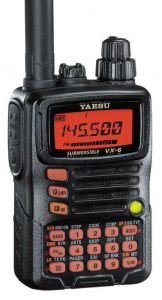 Icom V80 with aftermarket high-performance antenna – could hear 2 NWR stations clearly and one scratchy, basic alert capability.
Icom V80 with aftermarket high-performance antenna – could hear 2 NWR stations clearly and one scratchy, basic alert capability.
Yaesu VX-6 with Diamond 77 aftermarket antenna — could hear 2 NWR stations clearly and one scratchy, basic alert capability.
Scanners
![]() Uniden BC125AT with Diamond 77 aftermarket antenna – could hear 3 NWR stations clearly, basic alert function.
Uniden BC125AT with Diamond 77 aftermarket antenna – could hear 3 NWR stations clearly, basic alert function.
Uniden SDS200 with homebrew off-center-fed dipole antenna (see below) – could hear 6 NWR stations clearly, highly sophisticated programmable SAME and specific hazard alert functions, no battery power (the SDS100, handheld version of this scanner provides battery power); would require uninterruptible power supply or something similar if mains power goes off. Author’s note: while the performance is stellar, this is by far the most expensive option. With the stock antenna that comes with the SDS200, I could hear two NWR stations clearly.
Dedicated NOAA Weather Radio Receiver
Midland WR120 Weather Alert Radio – At the time I began this write-up, I did not own a dedicated weather radio receiver, so I reached out to www.midlandusa.com, and they were kind enough to send me this unit, which is built solely to receive National Weather Radio stations. With the built-in whip antenna extended, the receiver was clearly very sensitive. I could hear 4 of my local NWR stations clearly, and 2 more scratchy but copyable. If you are in a fringe area, there is a socket for plugging in an external antenna such as the one I describe below.
There is a little symbol on the box that says “EZ Progamming,” and I was pleasantly surprised that it was true. Between the MENU and SELECT keys, it is easy to walk through the setup. I thought that I would have to look up the SAME code for my location, but the WR120 has a built-in database of all the states and counties, so selecting my county was a snap. In addition to SAME programming, the WR120 has a long list of selectable alert options that you can choose to meet your needs. That list can be downloaded here: https://cdn.shopify.com/s/files/1/0531/2856/0817/files/SAME_List_of_Emergencies_Non-Weather_Emergencies.pdf?v=1636648846
The WR120 is powered by a tiny wall-wart transformer that plugs into house power, and the user installs 3 AA batteries to provide back-up power in case the lights go out. The manual does not say how long it will operate on battery power.
It seems to me that if you do not already own a device that will receive NOAA Weather Radio stations, the WR120 would be an excellent choice.
Boosting Performance
If you want to boost the performance of the radio you are using to listen to NOAA Weather Radio, I can highly recommend this antenna: https://wiki.radioreference.com/index.php/Homebrewed_Off-Center_Fed_Dipole .
I built the wire version, hung it inside in a corner of my radio shack, and with it attached to either Uniden scanner or my Icom V80 ham handi-talkie, I can hear six NWR stations from my location. This antenna offers a large boost in performance for a modest investment of time and money.
In his blog, Smith argues that each of us ought to have redundant means of alerting us to hazardous weather: an app on your smart phone, plus an NWR-capable radio with alert function at home, plus your local TV or radio stations. To which I say: darn good idea!

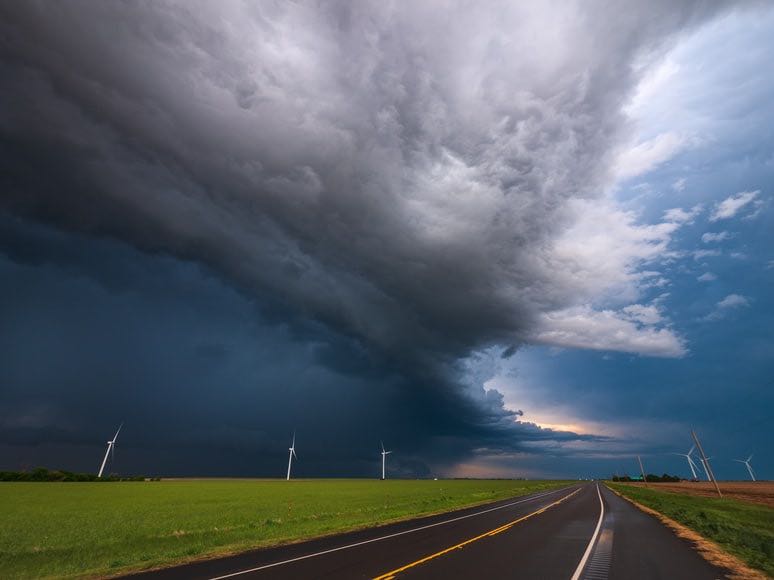
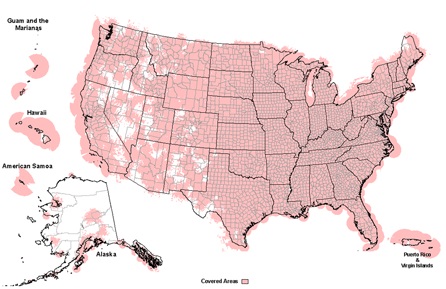
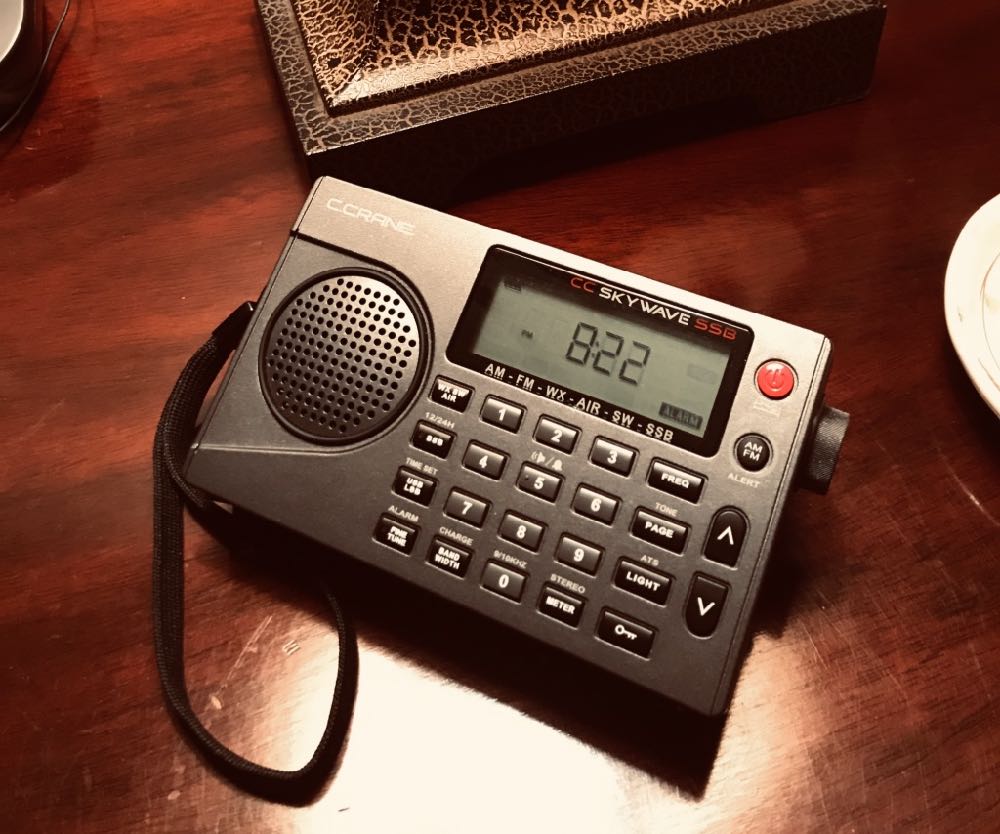
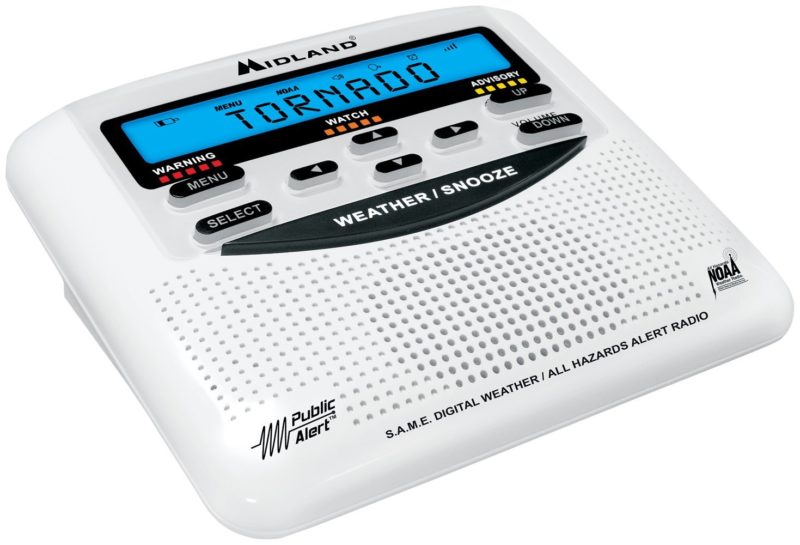
I’ve been a fan of NOAA weather since the ’60’s when I’d listen to KWO-35 that was atop the Rockafeller Center building in NYC. Back then they had human announcers hihi.
Thanks for the entertaining article Jock.
All interesting. But a window helps a lot too. Don’t forget to look out the window and see what the clouds are doing. This assumes you also have done your “home work” of knowing what cloud formations are and all that.
And, as said above. Don’t put all your Safety Planning” in one basket. You can count on the high-technology stuff going down in a real storm or disaster. Believe me. Been there, watched that – or heard it on the frustrated radios that were clogged with unnecessary communications when a tornado or hurricane or what-ever really happened.
de W0JOG
Vern,
Windows and clouds? Of course! There is a very interesting book, called “Reading the Clouds: How You Can Forecast the Weather” that I can recommend.
You and I are in agreement: don’t put all your safety planning in one basket. You need redundant sources of information when it comes to potentially threatening weather.
In addition, I find the daytime skies fascinating. In fact, I have a website that combines my faith with my photography of the daytime skies: https://theheavensdeclaretheglory.wordpress.com/
Thanks for your comments.
Cheers, Jock
Jock,
Can you explain why the recommended antenna is off center fed? Not sure what this does versus an old fashioned dipole…
TheZ, it was recommended to me as a broadbanded antenna that would work very well at many of the frequencies that scanner listeners want to monitor. It works well for that and for the NOAA Weather Radio frequencies.
I’m sure it would be relatively easy to build a dipole specifically for NWR frequencies, but I have no need for that.
Cheers, Jock
A quick note on consumer weather radios: the CC Pocket has weather band and it pulls in as many NWS signals as my CCrane 2E. And, it’s portable. The weather alert function is featured on most such radios; however, this is being ushered into obsolescence by the dissemination of EAS warnings via wireless phones and other devices. Personally, I’ve never used that function on any radio because there are too many warnings for surrounding areas (or marine warnings on Lake Michigan). OTOH, I do listen to NWR quite a lot when I want a quick, detailed and accurate forecast combined with current conditions around the region.
Stogieguy7,
If you had an NWR frequency capable radio that also had SAME and specific hazard alert functions, you could “tune out” the alerts that you don’t want to hear.
But even without the SAME and specific hazard alert functions, NWR is still a wonderful resource. I’m glad you find it useful.
Cheers, Jock
Jock,
I do not live in North America.
The only one I know of is Radio Marti
TIME IN UTC/GMT BROADCASTER FREQ in kHz DAYS LANGUAGE TARGET TRANSMITTING SITE Power kW Antenna beam degrees
1700-0200 Radio Marti 7345 Daily Spanish Cuba USA, Greenville, NC 50 174
If you want to listen to it and you don’t have a drm radio, to to the kiwiSDR website look for the map and remotely access a receiver in the coverage area from Greenville USA Southwards. KiwiSDRs have a DRM reception mode.
One side effect of having a network of stations like this on VHF is that it makes for a fine way to check propagation. Skip isn’t as common above the FM band but it does happen, and these channels make for an easy way to see if anything is happening.
When I lived in rural Mississippi, hearing an Arkansas-based NWS signal from well over 150 miles away clued me in to a skip even that covered FM! I might’ve missed it otherwise.
Tom,
Excellent point! Similar, in a sense, to time stations on HF.
Cheers, Jock
Yes, I live between Chicago and Milwaukee and when I start hearing NWA signals from western MI – that’s when I know we’ve got some good tropo happening. And it’s pretty frequent during the warmer months.
I have the inexpensive Eton FRX-2 self charging radio that also charges cell-phones. Hand crank, solar or plugin to wall outlet.
From my notes in 2019:
“So I did a little reception test with my little FRX2 self-charging emergency radio: with improvised coil antenna. I picked up Seattle on AM radio…921 miles away…wow. I had added the coil hoping to extend the range from a 100 miles or so to maybe 300? 921 miles and Seattle coming in loud and clear on AM. Unbelievable.
Note: the coil is composed of simple wire with alligator clips on both ends and a small copper pipe pounded into the ground. One end is run up into a tree a attached to a tree branch. The other is attached to the copper pipe. The middle of the wire is made into a coil of a half dozen rounds and you place the little radio through the coil. Play with it a little until reception improves.”
In the event of national emergency the government can send out messages through the the EAS over the NOAA which is largely automated and some hardening against EMP during the Trump Administration occurred I heard.
Paul,
Interesting you should mention EAS. Between the time I submitted this piece to SWLing.com and the time it appeared, my wife and I were running errands, and our very first CMAS (Commercial Mobile Alert System) arrived on our flip phone, warning us with a loud alert and text of a snow squall about to come through our area. CMAS is part of WEA (wireless emergency alerts). More info can be found here: https://www.fema.gov/pdf/emergency/ipaws/cmas_factsheet.pdf
Is that coil gizmo you mentioned a commercial product? If so, what is its exact name?
Cheers, Jock
I would turn off any alerts that are not important to you on a NOAA WX radio. I live near Detroit MI and since I am near a lot of big lakes I have all of the marine alerts turned off. There is no reason for me to be awakened for an alert for that.
As mentioned in the article one should really use the SAME code for where you live. That also cuts down on alerts that do not pertain to you from nearby counties. All the SAME codes for the US are here; https://www.weather.gov/NWR/counties
A note about consumer radios with AM/FM receive. When they are in NOAA WX alert mode they are using power even though they look like they are off. I would highly suggest having at least one set of extra batteries for your radios at all times.
I have a CCRadio 3 and can say that it is a pretty good WX radio. It is very easy to put in WX alert mode which is a great feature. It does not have SAME code programming but I am OK with that. I leave our Reecom R-1630C weather radio at home when we go traveling or camping but always take the CCradio with us. Last summer we were camping on the east shore of Lake Michigan at Muskegon State Park. One day we had a bad storm heading towards us and we got a lot of alerts. It was great to get them when right when NOAA issued them.
Zack,
You’re right, and you’ve made a very good point: if your consumer am/fm/weather radio is in alert mode, it is still drawing power even if it is turned off. If it is running off batteries, it is pulling power from them, and you should have extra batteries available.
If I lived near the Great Lakes, I would be really tempted to keep the marine alerts on, just to hear what was going on, at least during the day.
Cheers, Jock
You point out that the death rate from tornadoes has decreased significantly since the 1950s, which coincides with the introduction of NOAA Weather Radio.
But, as we’ve been reminded many times during the pandemic (and in your Statistics 101 course), correlation does not imply causation.
Other factors may also be responsible for the decrease in death rate, such as better building construction, better communications infrastructure, and better public education about preparing against tornado hazards. It would require scrutiny to tease out the actual causal mechanism here.
That said, I have several radios that receive the NOAA broadcasts, and find the broadcasts to be a useful service.
Paul,
You’re right: correlation is not causation. I’m not saying that NWR is the only reason for the improvement, but I am sure glad we have it!
Cheers, Jock
As I’ve said before, I bought two pairs of FRS walkie talkies at garage sakes for cheap, and both tune the weather frequencies. Certainly better than the Radio Shack Weatherradio I got about 1976.
I got the first pair out of curiosity, the second to see if they got the weather channels. I have noidea how common that is.
Michael,
It’s seems like weather channels in FRS radios are fairly common, judging from what I see on the shelves.
Cheers, Jock
I actually use the Midland WR120 as Ye Poor Man’s EAS on Part #15 station, and it’s been rockin’ since February 2020. https://archive.org/details/yepoormanseasrev2.1/Ye%20Poor%20Man%27s%20EAS%2C%20Diagram%2C%20rev%202.1%2C%203-8-2020/ Being at the bottom of a river valley, I boost the radio’s receive with a +10dB TV antenna preamp. However, the best radio that I’ve programmed the Weather FREQ’s in was a commercial Kenwood TK-230 brick HT. That received the Clearfield, PA station from Western New York on a 8″ duck antenna. On amateur rigs, my Kenwood TM-D710A has Weather Alert built-in, and that thing wails loud when it goes off. And, I’ll also use the WX feature on scanners as well. Our C-Cranee Radio Plus has Weather on it, but that not the best.
Dood,
Interesting and creative use of the WR120!
Cheers, Jock
I have had a Midland WR300 in service for years here. Setup was easy enough, and it doubles as a decent alarm clock with FM radio. Mediumwave reception is horrible, but I did not buy for an AM radio.
I agree about selective alerts. I live along the Gulf of Mexico, which means lots of marine alert traffic. While potentially interesting, I am not too keen on hearing audible alerts at 3:00AM of what is happening miles offshore.
While on the topic of possibly useful features, if anyone is hard of hearing and/or prefers visual alerts, multiple Midland weather radios have support for an optional external warning strobe light.
Excellent point on the visual alerts, Robert. Thanks!
Cheers, Jock
Thanks, Steve, for the kind words.
Cheers, Jock
Nice article. A radio service I tend to overlook, one reason being I’ve had poor sensitivity on cheap weather radios in the past. I appreciate the recommendations.
http://www2.unb.ca/gge/test/SWL/2018-0568a%20DRM%20REPORT%20final%20PDF%20UDI%201732.pdf would be better than NOAA because it can transmit maps, detailed indexed text instructions and road closure data for the vehicle navigation to enable people to escape.
Emergency Waning Functionality will also wake the radio, wake the potential victims, make a loud announcement.
Mangosman,
Is it available now anywhere in the US?
Cheers, Jock
By the way, never totally rely on internet or cell phone warnings. I have personally been through a tornado. No cell service, no internet service. Radio worked.
Dave M.,
Amen, brother, Amen!
Mike Smith recently reiterated his assertion that all of us need redundant means of dangerous weather alerts: http://www.mikesmithenterprisesblog.com/2022/02/with-tornado-season-just-beginning.html
Cheers, Jock